Trials carried out at Louisiana State University
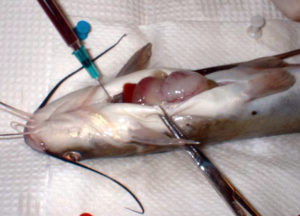
Alternatives to high-cost protein supplements in formulated channel catfish diets are desirable because protein is one of the most expensive feed components. Since feed costs constitute about half the production costs in most catfish-farming operations, a reduction in the cost of feeding fish can have a significant positive impact on profitability. One way to reduce diet costs is to replace expensive animal products in diet formulations with lower-cost plant products.
Manufactured diets
The amount of plant products in manufactured catfish diets has steadily increased as the quantification of the nutritional requirements of catfish has improved and the use of least-cost diet formulation has become more widespread. Today’s manufactured catfish diets typically contain at least 90 percent plant products.
These diets are sometimes supplemented with purified crystalline amino acids to eliminate amino acid deficiencies caused by the replacement of high-quality animal proteins with plant proteins. Plant proteins often possess amino acid compositions less favorable for catfish than the animal products they replace. However, the efficiency with which catfish utilize supplemented plant amino acids has not been extensively measured.
Amino acid study
The authors recently carried out a multiphase study to quantify differences in the apparent absorption of protein-bound and purified amino acids provided to catfish either as intact protein in practical diet ingredients or mixtures of purified crystalline amino acids. The apparent digestibility (availability) coefficients of the amino acids in six practical ingredients – blood meal, corn meal, fishmeal, meat and bone meal, soybean meal, and wheat middlings – were compared to the apparent amino acid availability coefficients of the same amino acids in crystalline form in mixtures designed to match the concentrations of the amino acids in the practical ingredients.
Differences in the concentrations of 15 amino acids in the blood of catfish fed intact proteins or crystalline amino acid mixtures also were measured. Blood samples were taken from the hepatic portal vein, which carries absorbed nutrients from the intestine to the liver, to measure plasma amino acid concentrations as close to the site of absorption in the intestine as possible, thereby eliminating the effects of metabolic processes in the liver on levels of amino acids in the blood. Blood samples were taken from several fish at each sampling period to obtain the average concentrations of amino acids in blood plasma at different lengths of time after feeding.
Feeding trials
A preliminary feeding trial with soybean meal, in which blood was collected up to 96 hours after force feeding, indicated that plasma amino acid concentrations usually peaked within 10 hours after feeding (Fig. 1A). A subsequent feeding trial indicated that concentrations of most amino acids peaked in the hepatic portal vein blood between two and six hours after feeding (Fig. 1B). Then, two laboratory feeding trials were conducted to quantify differences in the digestibility of dietary amino acids that were provided either in intact proteins or as purified compounds.
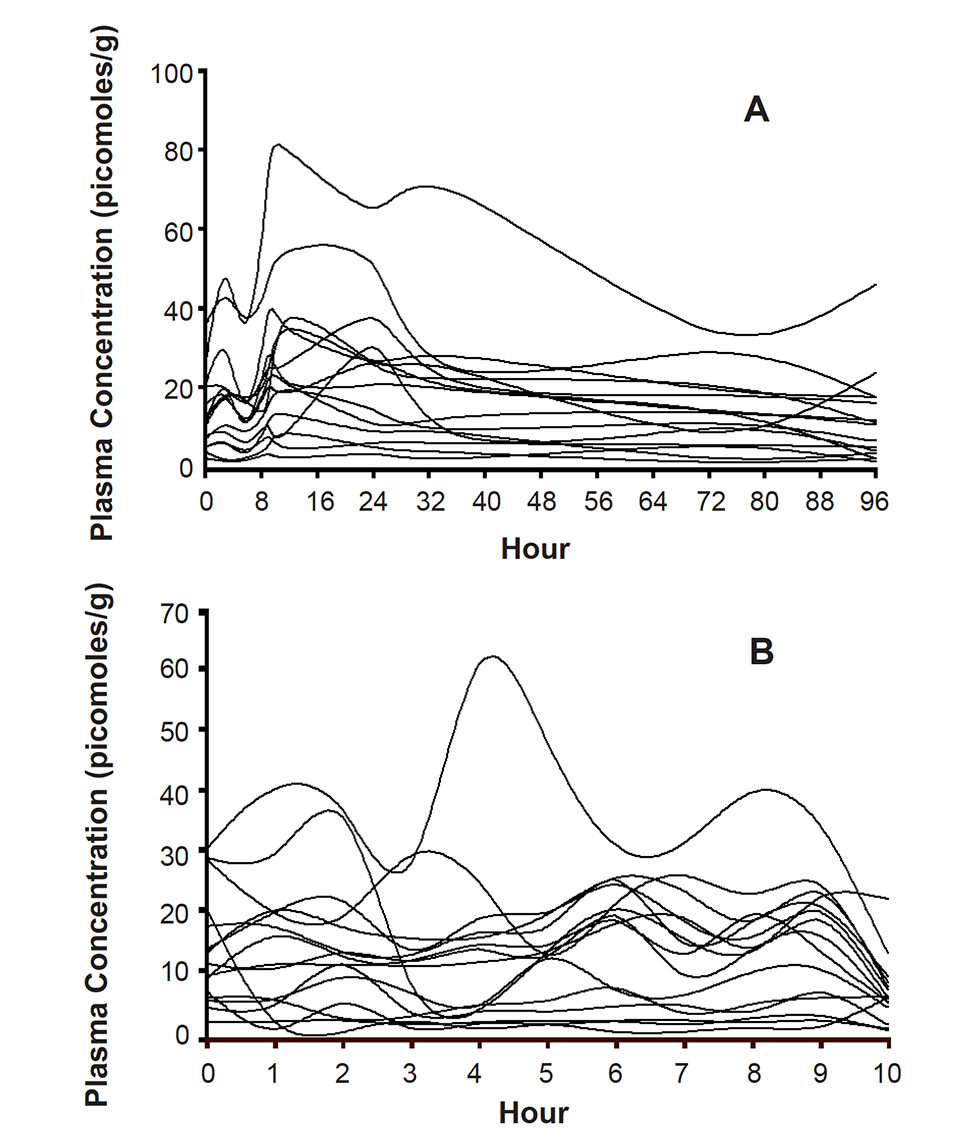
Apparent digestibility coefficients
In a first experiment, 36 channel catfish of 346 grams average weight were force-fed one of the six practical feed ingredients or a mixture of crystalline amino acids, minerals, starch, and cellulose designed to duplicate the amino acid composition and proximate analysis of each of the practical ingredients. Apparent digestibility coefficients (ADC) were calculated for 15 amino acids in each ingredient and amino acid mixture. Average coefficients for all amino acids in each ingredient and amino acid mixture were also calculated.
Very few statistically significant differences in the ADCs of individual amino acids were observed. However, in all but two ingredients, the average ADCs for amino acids in fish fed purified amino acids were significantly higher than those in fish fed intact proteins, indicating that purified amino acids were usually absorbed faster than amino acids obtained from digested proteins.
Amino acid uptake
In the second experiment, 468 channel catfish with 396 grams average weight were force-fed the same ingredients and amino acid mixtures used in the digestibility trial. Blood was collected from the hepatic portal vein of multiple fish at hourly intervals for 12 hours after feeding to track temporal differences in the uptake of amino acids from the different dietary sources.
For four of the six ingredients tested, concentrations of some amino acids in blood plasma were significantly higher and reached peak levels earlier (one to three hours after feeding) in fish fed purified amino acids than in fish fed intact proteins, again indicating a tendency toward faster absorption of purified amino acids than protein-bound amino acids. The results also indicated that protein was well digested by channel catfish, regardless of its source. However, soybean protein appeared to be digested more slowly than the other proteins tested.
Implications for feed conversion
Differences in the rates at which amino acids are released from the proteins in practical ingredients could affect the efficiency with which dietary amino acids are used in protein synthesis and, consequently, the efficiency of feed conversion. The efficiency with which purified supplemental amino acids in formulated diets are used to promote growth could be reduced if slowly digested proteins constitute a major portion of the diet.
Amino acids that are not used in protein synthesis are metabolized for energy. Therefore, temporal differences in the uptake of amino acids from rapidly absorbed sources, such as purified supplements, and slowly absorbed sources, such as intact proteins, could produce imbalances in the amounts of amino acids that are available for protein synthesis at different times after feeding, especially if the supplements contain dietary essential amino acids.
Such imbalances could result in dietary essential amino acids being shunted to uses other than protein synthesis. If so, the effectiveness of amino acid supplementation could vary with the ingredient composition of the diet to a greater extent than previously recognized.
Additional research is needed to clarify how the ingredient composition of diets affects the utilization of purified amino acid supplements, so that diets can be formulated in a manner that maximizes the biological and economic benefits of amino acid supplementation.
(Editor’s Note: This article was originally published in the June 2006 print edition of the Global Aquaculture Advocate.)
Now that you've reached the end of the article ...
… please consider supporting GSA’s mission to advance responsible seafood practices through education, advocacy and third-party assurances. The Advocate aims to document the evolution of responsible seafood practices and share the expansive knowledge of our vast network of contributors.
By becoming a Global Seafood Alliance member, you’re ensuring that all of the pre-competitive work we do through member benefits, resources and events can continue. Individual membership costs just $50 a year.
Not a GSA member? Join us.
Authors
-
Amogh A. Ambardekar
Louisiana State University Agricultural Center
Aquaculture Research Station
Baton Rouge, Louisiana 70820 USA -
Robert C. Reigh, Ph.D.
Louisiana State University Agricultural Center
Aquaculture Research Station
Baton Rouge, Louisiana 70820 USA -
Millie B. Williams
Louisiana State University Agricultural Center
Aquaculture Research Station
Baton Rouge, Louisiana 70820 USA
Tagged With
Related Posts
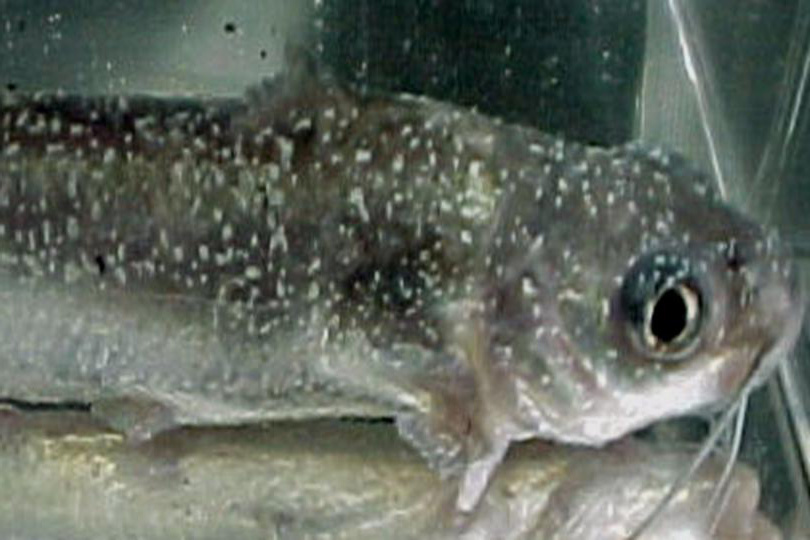
Health & Welfare
Antigens provide immunity against ich in channel catfish trials
Vaccination against the Ich parasite is an alternative to chemical treatment. Fish develop a humoral immune response to trophont antigens, with the degree of protection related to the immunizing doses of trophonts used.
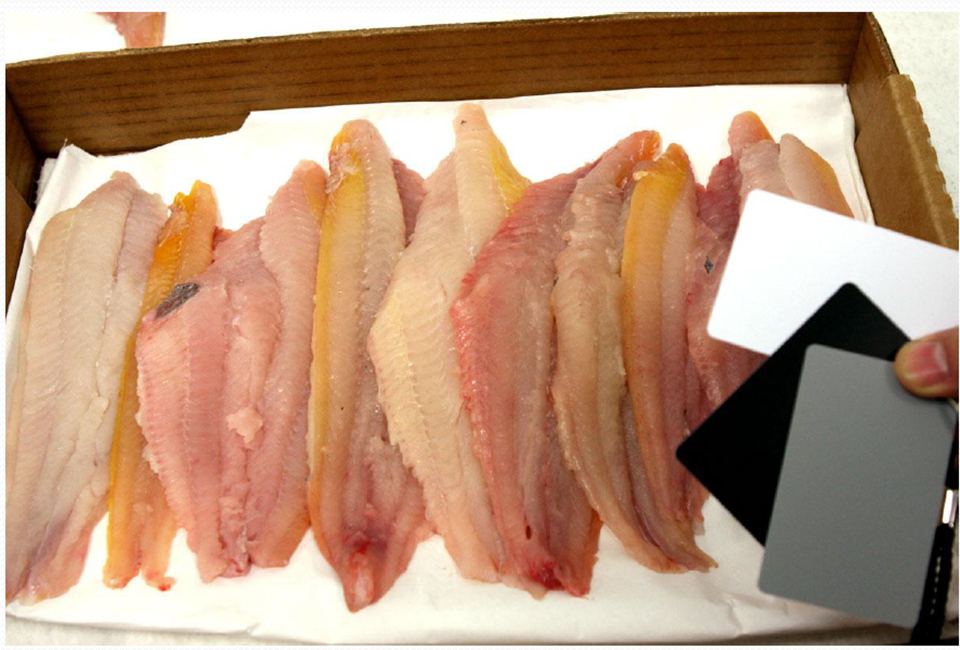
Innovation & Investment
Assessing coloration in channel catfish fillets
Because consumers look at color to gauge quality of catfish fillets, the authors developed a digital photography measurement method to assess yellowness.
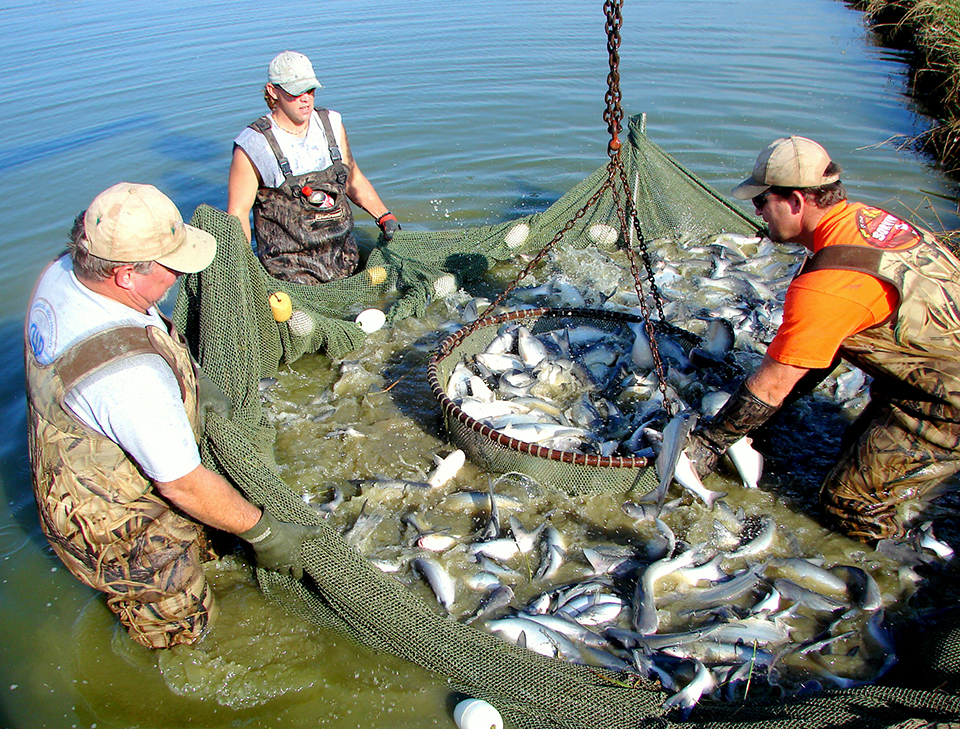
Health & Welfare
Blue catfish outproduce channel catfish under low-D.O. conditions
Although there is increasing interest in blue catfish, a potential disadvantage of the fish when compared to channel catfish is their reported poorer tolerance of low dissolved-oxygen concentrations.

Health & Welfare
Biofloc technology reduces common off-flavors in channel catfish
In studies that used biofloc systems to culture channel catfish, culture tanks were susceptible to episodes of geosmin and 2-methylisoborneol and subsequent bioaccumulation of off-flavors in catfish flesh.


